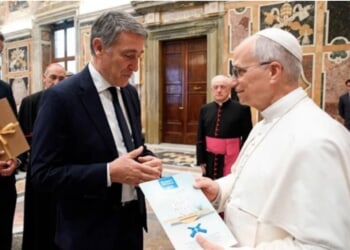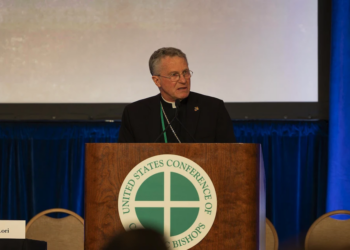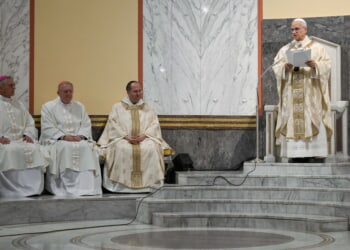As the Trump administration contemplates high risk land operations against Latin America’s drug cartels , it’s calling on Bolivia’s newly elected government to reveal its “secrets” of Iran’s “penetration of the Western Hemisphere” through military agreements forged with Bolivia and Venezuela that made them hubs of Iranian influence.
Hundreds or possibly thousands of Hezbollah fighters directed and supported by a robust Iranian regional network could pose a significant threat to U.S. forces in Venezuela.
In pointed remarks to the media while attending the swearing in of Bolivia’s new president Rodrigo Paz last week, U.S. deputy secretary of state for the Western Hemisphere Cristopher Landau spoke of the “grave threat” presented by the “alarming” alignment between Bolivia and Iran over the past twenty years, in a marked departure from previous U.S. administrations, which tended to ignore the threats.
I don’t yet know if the new government of Bolivia understands exactly the situation its inherited concerning relations between the past governments with Iran. But I suppose that this will be a matter of great mutual interest not only for the U.S. and Bolivia but for Argentina, Chile, Paraguay, and other neighboring countries concerned about, let’s say, military equipment that may be getting made or distributed in Bolivia.
In the course of covering Latin America for various news organizations during the past twenty years, I’ve closely followed Iran’s growing encroachments in the region and can provide some previews as to what Bolivia’s secret Iranian files may contain.
Leftist narco president Evo Morales followed Venezuela’s lead in opening relations with Iran soon after taking office in 2005. There were a series of coordinated high level visits and official exchanges between the three governments in subsequent years, when agreements involving defense and security cooperation were negotiated through secret talks at the highest levels.
According to Venezuelan ex spy chief, General Cristopher Figueres, who accompanied Venezuelan president Hugo Chavez on a trip to Teheran, discussions with the ayatollahs were so sensitive that they were held in the most insulated lower floors of underground command bunkers.
The former head of Venezuela’s intelligence service SEBIN says that they discussed the appointment of Tarek El Aissami, a Venezuelan far left militant designated by the U.S. Treasury Dept as an operative for Hezbollah to the top post of security minister as well as the deployment of IRGC Qods officers to advise Venezuela’s armed forces.
Joint military industrial projects between the IRGC and Venezuela’s defense contractor CAVIM include production of a version of Iran’s Mohajer-6 strike drone; the Mariscal Don Jose De Sucre-100 armed with missiles and operating ranges extending well into the Caribbean.
Venezuelan air force chief, general Pedro Juliac, became de facto “head of Iranian operations” in Venezuela and ambassador to Teheran, acquiring more advanced Shahed kamikaze drones which concern U.S. war officials drawing up plans for land operations in Venezuela.
U.S. and Argentinian intelligence agencies believe that Iran is also building drones in Bolivia, as part of secret military agreements negotiated under former presidents Evo Morales and Luis Arce. A “cell” of senior Bolivian generals and IRGC officers manage projects supervised from Iran’s embassy which has become the largest diplomatic mission in Bolivia, occupying a six floor building in a walled in compound that takes up an entire city block of the capital, La Paz.
Argentine intelligence officials have told The American Spectator that Qods also operates a clandestine base at an Iranian built hospital in the city of El Alto close to Bolivia’s main airport. Hundreds of Bolivian identity documents have been distributed to Iranian agents to facilitate their movement throughout the hemisphere, according to these sources. Senior U.S. intelligence officials testifying at a Senate hearing last month estimate that Venezuelan passports handed out to arrivals from the Middle East, many of them Lebanese, could number 10,000.
I reported on Iran’s growing South American presence back in 2011, in a full page article for The Wall Street Journal, leading off on a visit to Bolivia by Iranian Defense minister Ahmad Vahidi, accused of masterminding the 1992 Hezbollah truck bombing of the AMIA Jewish community center in Buenos Aires which killed 85 people.
Vahidi presided together with Morales over the inauguration of a special military staff college for officers from leftist aligned Latin American countries financed by the IRGC. According to U.S. diplomatic officials, a group of Iranians ran electronic surveillance and eavesdropping operations for Morales from his presidential offices, alternating with a Cuban intelligence team.
At a time when little official attention was paid to Iran’s growing intimacy with Latin American regimes which even then Senator Marco Rubio dismissed as “PR,” I reported that Iran was recruiting local engineers to work computer security for its nuclear program while trying to acquire high grade uranium from Venezuela and Bolivia.
The CIA was keenly aware of Iran’s activities but the Bush administration wanted countermeasures to remain low key. The State Department created a special unit to monitor Iran’s moves in the hemisphere but Obama shut it down when it got in the way of his appeasement policies towards Teheran and Havana.
Iranian encroachments have grown virtually unchecked due as much to willing collaboration from leftist Latin governments as the neglect of successive U.S. administrations. Venezuelan national guard general Marco Ferreira who tried warning the Pentagon about Iran’s growing influence during the early 2000s, tells The American Spectator that he got a cold reception from the Defense Intelligence Agency, whose officers expressed little interest in the matter and questioned his credibility.
An Iranian Boeing 707 cargo jet chartered under a Venezuelan airline company crisscrossed Latin America for years, until its gun running antecedents in the Middle East were reported and it was grounded in Argentina under a U.S. court order in 2022. The pilot and other personnel on board were identified as Qods officers but Argentina’s leftist president Fernandez at the time released them back to Venezuela before they could be questioned by the FBI which was blocked from inspecting the aircraft until conservative president Javier Milei took office a year later.
Opening Bolivia’s top secret files on Iran, as proposed by Mr Landau, could seriously expose Iran’s network in Latin America, revealing its corrupt inner workings that may allow the U.S. and its allies to catch undercover Qods officers , Hezbollah operatives and their local agents red handed.
Counter-terrorism experts from several U.S. security agencies recently told the U.S. Senate that Hezbollah increasingly relies on revenues from its Latin American drug operations integrated with Venezuela’s Cartel de Soles for “badly needed cash infusions” following recent setbacks in Lebanon and Syria.
“Hezbollah’s presence in Venezuela has expanded dramatically,” according to former Pentagon official Marshall Billingslea. Gen. Figueres told the British newspaper The Sun that there are about 1000 members of Hezbollah on Margarita island, which has become a center of Islamic activism, about 400 around the Venezuelan army base in Maracay outside Caracas and some 200 at the port of Valencia, a harbor for drug boats.
Hundreds or possibly thousands of Hezbollah fighters directed and supported by a robust Iranian regional network could pose a significant threat to U.S. forces in Venezuela, destabilize a democratic government replacing Maduro, and possibly conduct terrorist attacks in third countries including the U.S.
Bolivia may be the first domino to fall in Latin America’s Iranian aligned block of narco states and the U.S. will be “in very close touch with the country’s new authorities,” according to Mr Landau. “I think that we are going to see some very surprising things regarding Iranian penetration in the region,” he said.
READ MORE from Martin Arostegui:
The Soros Footprint in Latin America


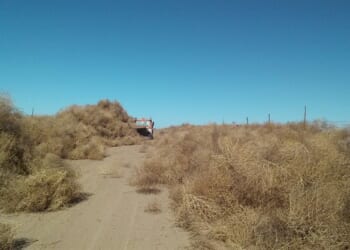
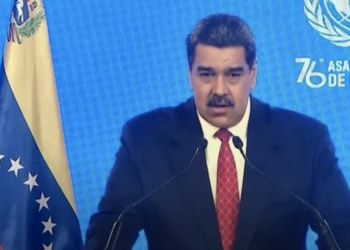


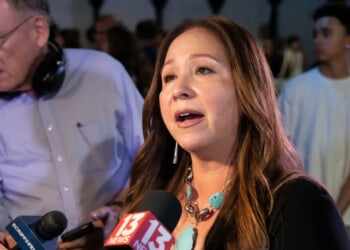

![Boomers Show Up In Force for the 'No Kings' Anti-Trump Protests [WATCH]](https://www.right2024.com/wp-content/uploads/2025/10/Boomers-Show-Up-In-Force-for-the-No-Kings-Anti-Trump-350x250.jpg)



